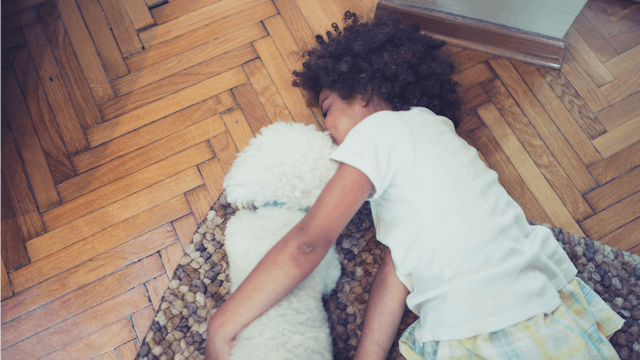This Is Why ALL Kids Need To Be Supervised Around The Family Dog

Many of us have dogs in our home, and fond memories of growing up with our own dogs. Your young kids may love your dog, hugging and playing with them, and your dog likely spends a lot of time hanging around under the table — what young kid isn’t a great source of food for a dog. Even if you don’t have a dog, your child is likely to be around one at some point, and you should read this.
Do you ever read those stories online, or see awful pictures, of young children that have been bitten by dogs? And thought to yourself that you’re so lucky that your dog loves your kids? That you don’t have to worry about that?
You do. You do have to worry about that.
A majority of dog bites to young children happen with dogs that are familiar with the child who was bitten. In one study, 82% of reported bites were from familiar dogs. Children who were one year of age were the most likely to have a reported bite, with risk decreasing with older children.
A majority of the pictures on social media, where there are comments upon comments of how cute a dog and child are, in fact aren’t cute. The dogs are showing signs of stress, fear, or even worse, aggression. And many parents, even ones who have had dogs all their lives, don’t know how to read those signs.
When I was eight or nine, our neighbors’ dog bit me. I didn’t even know the dog was around and was lifting a bunny out of a coop. I was left with some pretty good punctures on the back of my thigh, but luckily no permanent damage. I can’t say the same for their nephew who was seriously injured by the same dog months later. Luckily he wasn’t a really young child, or the outcome could have been worse. I was old enough and had enough intuition to be wary of the dog, but the owner didn’t know how to read dog behavior to keep the dog away from kids.
So as a parent, what can you do?
1. Always supervise interactions between dogs and young children. This doesn’t mean that you’re simply in the room, but that you’re actually watching when they’re in contact or near one another. If you’re not able to supervise closely, they should be separated.
2. Learn how to read dog behavior so that you can see when your dog is uncomfortable and needs their space. Find an expert that you can talk to and learn how you can tell from your dogs’ posture, eyes, mouth, ears and tail when they aren’t comfortable with the situation.
3. Never punish your dog around your child. You don’t want them to make the association that punishment happens around children — that can increase fear and stress, emotions you don’t want associated with that relationship.
4. If your child is going to another home that has a dog, talk to the parents about the type of interactions and supervision there will be around your kids and the dog. Ideally, they would have the dog separated as kids playing together can be very exciting for dogs.
Having a dog can be wonderful for young kids, providing a special bond as well as teaching responsibility and empathy. As parents, we just need to be supervising and ensuring that both our children and dogs are comfortable with their interactions.
This article was originally published on